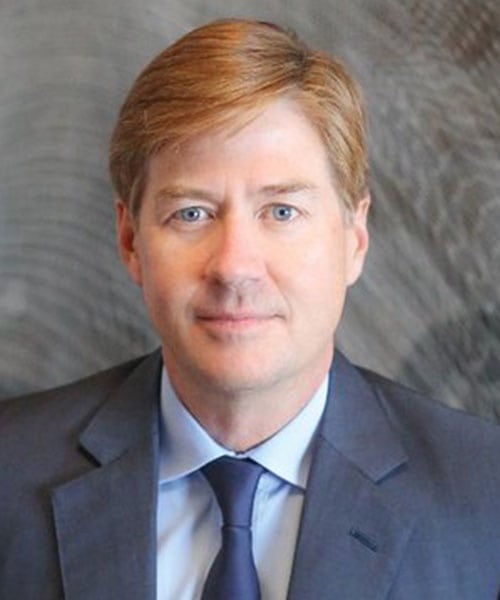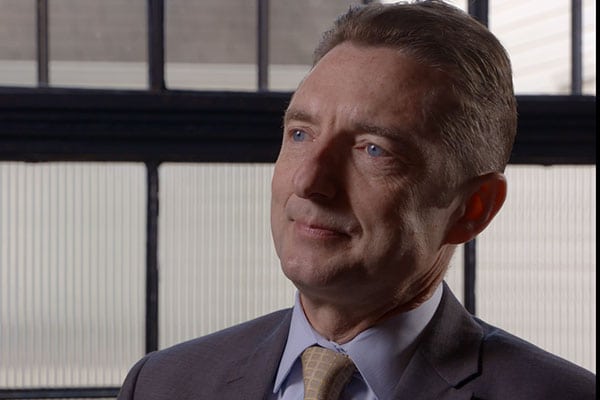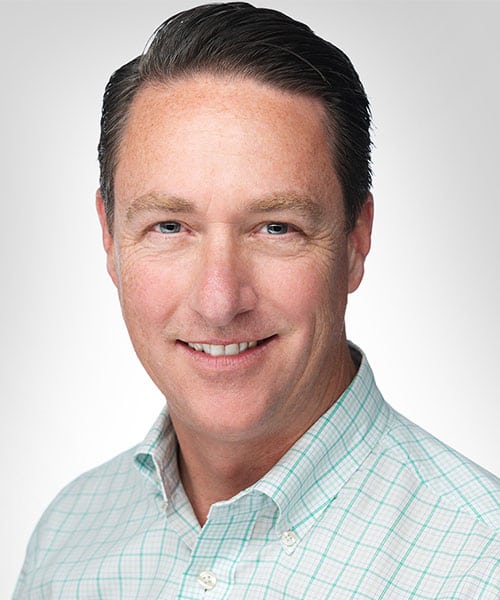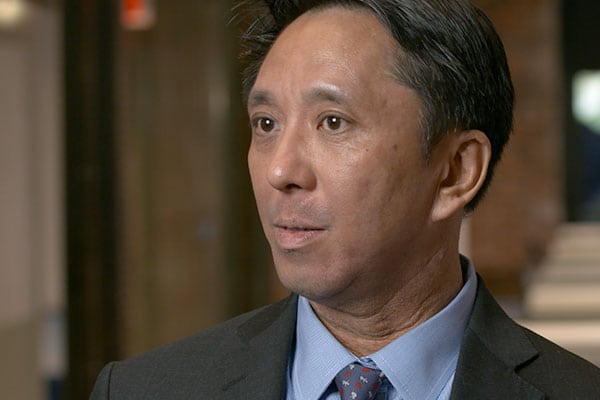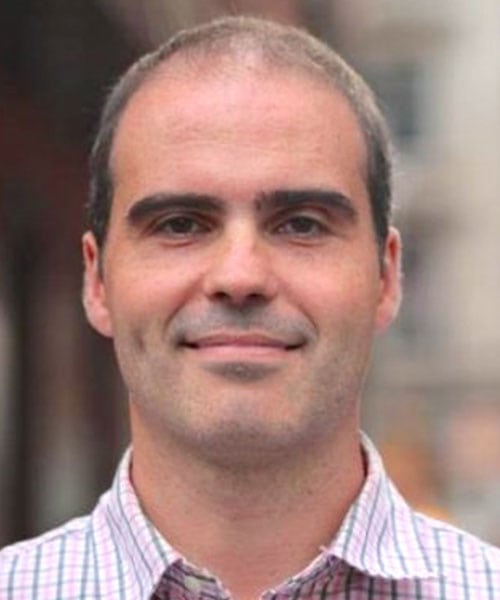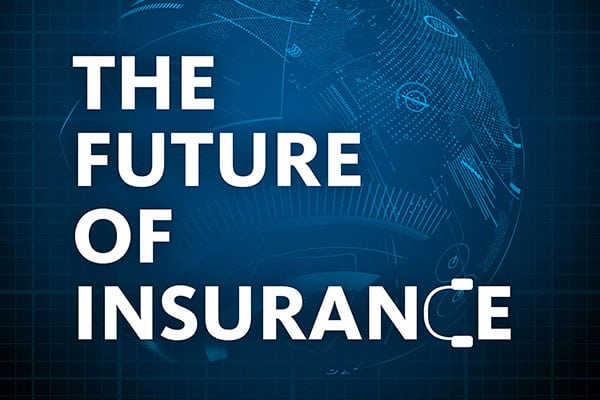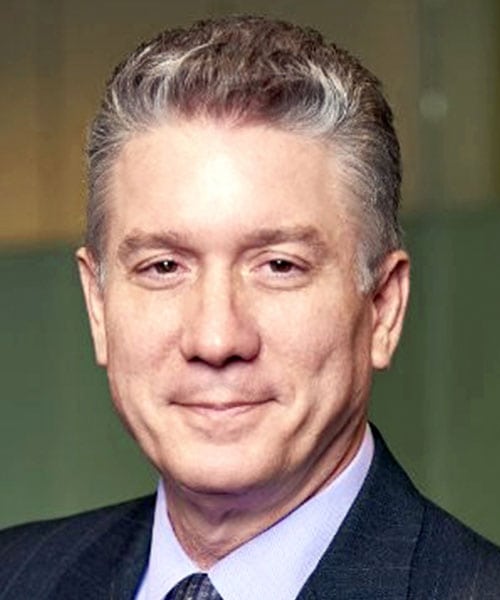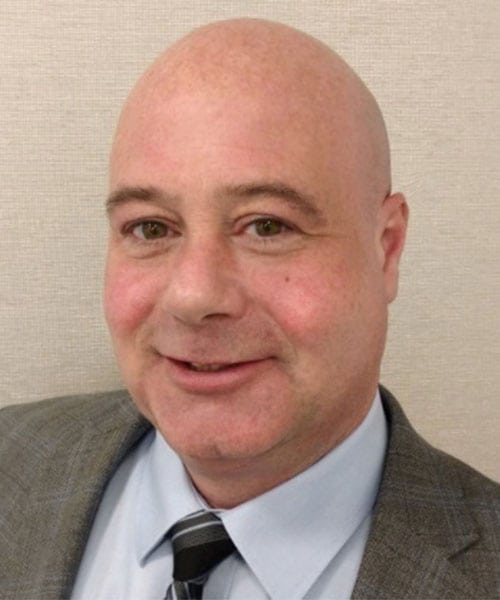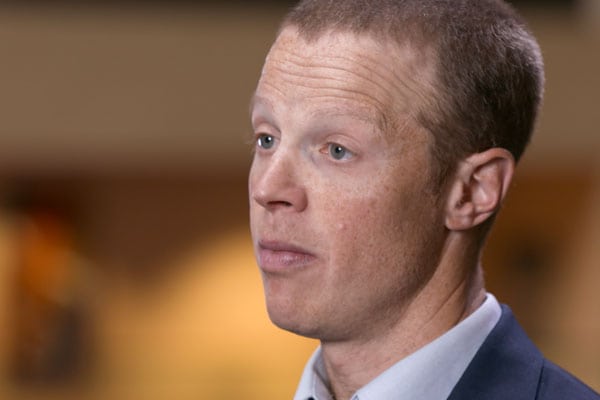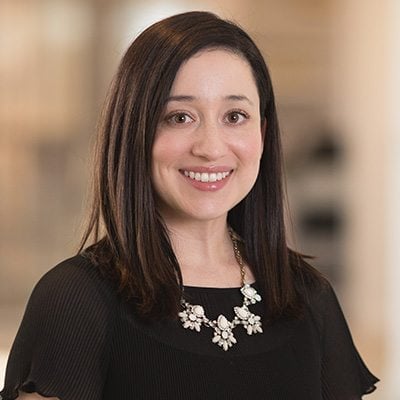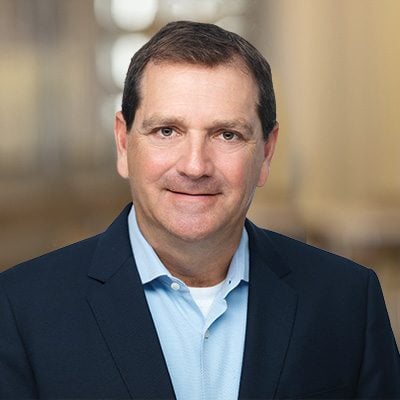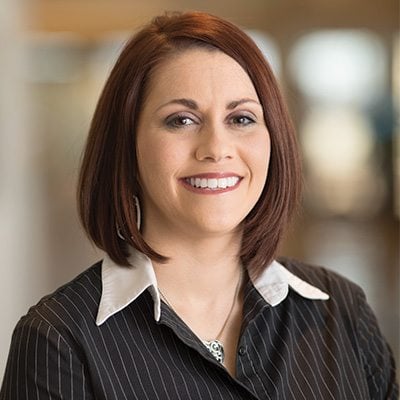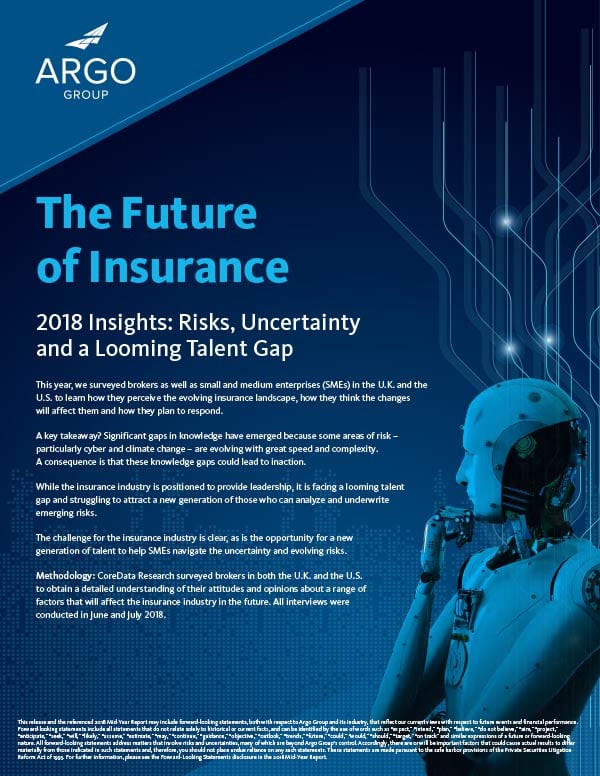In the first six months of 2018, Argo stayed on a path of growth and profitability. We competed in new and expanding niche markets around the world, maintained rigorous discipline in risk selection, innovated products and systems with advanced technology, and offered customers exceptional service across all our platforms.
Digital Focus Producing Solid Results
Nearly two decades ago, we identified technology as a transformative and potentially disruptive force that would ultimately change the way business is transacted in the insurance market. Ours is an industry that has been slow to adapt to change, and so it comes as no surprise that it took longer than we anticipated for these trends to emerge. Fortunately, at Argo our size allows us to be nimble and responsive. As well, our commitment to developing a digital platform provides the opportunity to adjust our business model while the industry adopts existing ideas.
We continue making significant steps toward our goal of using technology to reshape our business. Almost every part of our business is benefiting from the positive impact of our focus on digital. Overall, we are pleased with the progress we're making in terms of development of digital products, partnerships with insurtech-focused companies and modest strategic investments in tech-enabled ventures.
One example of how we are digitizing operations to benefit our customers and partners is demonstrated in our casualty underwriting system. The system speeds and automates key parts of the submission-handling process, allowing underwriters to quote more quickly. By the end of the second quarter, we were handling more than 75% of our submissions in less than one hour. This is an enormous improvement over the first quarter average of 33%. This improvement allows our distribution partners to be more responsive to their customers, providing them with rapid assurance of effective and competitive coverage. And, as we know, the first to quote is often the one to bind.
In addition, we have an application that is helping us automate quoting for a key line of business within our casualty portfolio. Currently, 23% of our broker partners are receiving digital quotes via full self-service, and that number is increasing every day. Of those submissions, nearly 80% had automated quotes that our underwriters never had to touch, and these are not small policies either. On average, the quote is around $25,000, and we have seen quotes in the hundreds of thousands of dollars as well. Our broker partners are now repeatedly using the system, as they realize the enhanced customer experience it enables them to pass along to their clients. We are achieving this success through artificial intelligence, coupled with a simpler digital user experience, which reduces the number of questions previously required by 70%. An average 15% month-on-month growth rate between January and June means more than 60% of this casualty line now flows through our digital system.
We have applied similar technology to offer a complete self-service rate, quote, bind and issue platform for our management liability business, where a key distribution partner can quote and issue policies entirely within the application. At the end of the second quarter, we launched the application three months ahead of schedule to a very positive response from our partners – a testament to our iterative customer-centric, modern approach to digital product development.
In addition, this platform, which is designed for small-to-midsize specialty businesses, will be used to quickly deploy more semi and full self-service lines of business to partners later in the year and into 2019. Another exciting element of this platform is our ability to quickly pursue new opportunities due to our ability to automate most or all of the underwriting process with minimal staffing increases. We are eager to provide additional updates on this technology as we work with our distribution partners to experiment on new opportunities.
As I mentioned, we also look to invest and partner with other insurtech-focused businesses. We announced recently a partnership with Corvus, a startup funded by Bain Capital Ventures, to offer a smart cargo insurance product designed to help food and beverage companies reduce loss of perishable goods. We like this line of business from an underwriting perspective and believe Corvus' approach could help us improve the loss ratio in the business.
Notable Milestones
Looking beyond our digital business, we reached many other notable milestones in the first half of this year. In March, we finalized the acquisition of Ariscom, a specialty Italian property and casualty carrier headquartered in Rome, for which we appointed Giovanni Tucci as CEO. We will now use our underwriting expertise to focus on new, profitable market segments in Italy and beyond, while marrying our digital products and more traditional offerings.
In May, we moved Argo Group shares to the New York Stock Exchange under the ticker symbol ARGO. As a member of one of the world’s most prestigious trading platforms, we can now reach a broader base of global investors and build even greater shareholder value.
In June, we announced a new underwriting business to serve the construction sector. Argo Construction will provide contractors with project-specific and ongoing coverage, including general liability and excess casualty. The team also will offer affiliated coverage, including professional liability, cyber, environmental, contractors’ equipment and builders’ risk. The service is much needed in the rapidly evolving $1 trillion industry, projected to be among the fastest-growing business sectors in the United States over the next seven years.
Overall Results
In the first six months of 2018, we booked gross written premiums of $1.41 billion, up 9.9% compared to $1.28 billion over the same period last year. Our net earned premium at $832.4 million was 6.9% higher than the same period last year. Our combined ratio was 96.1%, or 1.7 points better than we achieved in the same period last year, resulting in a net income of $66.6 million. With total investment income of $69.2 million in the period, we maintained a thriving investment portfolio that continues to contribute to our financial security. We continue to maximize shareholder value creation – over the past 15 years achieving an average 9.1% compound annual growth in book value per share, including dividends. In my opinion, these two quarters reflect a balanced and meaningful approach to growth and profit from our U.S. and International operations, as well as our investments in people, technology and innovation.
U.S. Operations
In the six months ending June 30, 2018, we increased gross written premiums by 11.8% to $782.8 million from $700 million. The combined ratio in the U.S. was 92%. Overall, our underwriting income was $42.4 million,* slightly lower than $50.1 million over the same period last year. With considerable growth in our U.S. business, we proved the merit of our strategy to invest aggressively in business lines in which we enjoy proven competitive advantage, deep management strength and growing geographic reach. Collectively, four strategic areas within U.S. Operations continued to grow, delivering an additional 10.9% gross written premiums in the first six months of 2018 over the prior year. Professional lines were up 39.3%, Surety 25.5% and Casualty 8.9%. Programs decreased by 7.3% due to an exited program, which masked growth in its core business. In many of these units, bold steps in digital and process optimization have enabled us to increase our premium-per-head-count, driving continuing efficiency. It has been a great six months in the U.S.
International Operations
In the first half of 2018, gross written premiums were $630.3 million, up $44.6 million from the first half of 2017, with top-line growth driven by our operations in Bermuda and Europe. Our reinsurance program stayed steady at $177 million, while our Latin American operations fell 11% from $32 million to $29 million. The combined ratio for International Operations was 92.6%. Overall, our underwriting income was $22 million,* compared to $4.6 million over the same period last year. In this period, we began realizing the expected benefits of having brought Ariel Re on board early in 2017, with the impact of that acquisition showing a full six months rather than just the five months last year. We spent those six months refocusing on core business and finding significant streams of fee income from other capital investors, with the added benefit of reducing volatility across the business. We also expanded and diversified in Europe, Latin American and Asia in our determination to get closer to our customers and access new sources of business rather than relying on business coming to London from international hubs.
Bench Strength
As always, the key to success in a service business is to get the right people working in the right positions. Without a doubt, our team is the strongest and most experienced I have led in my 18 years at Argo. We have terrific leaders for each of our businesses, each adept at deepening the skill sets of existing employees through training, coaching and mentoring. Earlier this year, Veronica Grigg joined the company to lead our Asia team. And our own Katie Partington Howarth now heads Argo’s Ceded Reinsurance group, leading strategy and implementation of our reinsurance buying programs for all business lines worldwide.
Inspiring Innovation, Teamwork and Sustainability
Argo maintains a vibrant program of corporate philanthropy, volunteer community support, and matching of contributions made by employees to charitable causes. In the first half of 2018, we continued these efforts through a number of community events designed to inspire young people with a focus we think will help prepare them for the future – innovation, teamwork and sustainability. In Hamilton, Bermuda, we sponsored a pro-am regatta for kids from the Endeavour Community Sailing Program – a youth education and community sailing initiative that uses science, technology, engineering, arts and math activities to foster students’ interest in those areas and the sport of sailing. In Newport, Rhode Island, we partnered with a youth sailing program to bring children from the Boys & Girls Clubs of Newport County out onto the water during the local stop of the Volvo Ocean Race. And in New York City, we worked with non-profit organization EdCo to host tri-state area high-school robotics teams at the NYC Formula E doubleheader. The young engineers toured the garage of our sponsored Formula E DRAGON racing team and saw up close how innovative technology is transforming world-class sporting competition. During each event, we made donations to these organizations, supporting their missions to inspire youth to succeed in this fast-changing world.
The Future of Insurance
We’ve been focusing on the future at Argo for more than 70 years – since our founding in 1948. We made many predictions over the years, and it is no surprise that when you listen to your customers, more of your predictions are proven correct. This year, to gain additional insight about emerging trends, threats and opportunities, we conducted a survey among our brokers and the small and medium-sized businesses (SMEs) they serve. The results confirm that some categories of risk are growing so fast and with such complexity that the proper level of insurance is lagging behind. For example, in the matter of cybercrime, seven in 10 (71%) brokers claim to be familiar with cyber risks. The number is even higher among SMEs, with 84% of respondents declaring cyberthreats as a priority issue; and yet only 40% carry any cyber coverage. Admittedly, the insurance industry has limited experience assessing the possible impact of these emerging risks, which makes pricing a challenge. And I continue to see a disconnect between reductions in the cost of cyber coverage and the increasing – likely unknown – scope of risk.
Climate change is a risk marked by a similar disconnect between knowledge and action. The climate is always changing, and the trends we are tracking could have serious impacts. As sea surface temperatures rise, sea levels are predicted to rise by up to six feet in the next hundred years. And around the world, storm patterns will change. People are living and doing business in areas that are now more flood-prone than before, and the industry is seeing more claims from those regions. Climate models indicate that hurricanes may actually become less frequent but stronger. The intensity of storms obviously creates a growing problem as well as an opportunity for our industry. Brokers seem to understand the risk, with 77% of those we surveyed stating that climate change poses a medium or high risk to their clients in the long term. But once again, SMEs do not appear to be quick to respond. Fewer than half (44%) intend to purchase additional insurance within the next five years.
Talent is a third pressing issue. We are on the precipice of losing a tremendous amount of talent from our industry through retirement over the next several years. Brokers are well aware of the challenge. Fifty-four percent expect a talent gap in underwriting, and 39% expect a similar gap in broking. Among the possible causes of the coming shortage, 35% of brokers name our industry’s slowness to innovate as a key factor, while 32% say lack of knowledge about the industry is to blame. Clearly, our industry has to find creative ways to cultivate and secure top-notch talent. At Argo, we are piloting a new program to help professionals new to our business shape and build their careers. Called “Ascend With Argo,” our initiative seeks to provide ongoing educational opportunities that help early-career producers thrive in their careers and build partnerships. We plan to provide a behind-the-scenes perspective into a wide range of rewarding and exciting insurance careers, and we will help prepare these individuals to become part of an elite and successful group of producers.
Facts and Faces: Making the Connections
Two other issues loom large as we consider the future: use of data and user connection. The smart use of accurate data is the key to success in our business. We continue to strive to better harness our own, and then match it with external data effectively, seamlessly and transparently so underwriters can make better risk-selection decisions. By 2020, 200 billion devices will be connected to the internet. This internet of things will generate 44 trillion gigabytes of data in a single year. Data and the proliferation of data will therefore have a profound impact on the insurance industry. For the first time, we will be able to measure almost anything that happens. And for anything that can be measured, our ability to precisely assess the risk will continue to increase. That will take us a long way toward making almost any object, event or activity insurable for the first time in history.
The other game changer is the way we choose to interact with our customers. Individuals are becoming much more comfortable bypassing human interaction when they buy insurance. To be successful, we have to elevate the experience for the individual buyer, even in specialty lines. We must continue to increase our value and therefore importance to our broking and distribution partners. As I explained earlier, at Argo we believe the answer lies in using the best of technology to anticipate and resolve the challenges buyers face and the results are proving to be significant. By connecting with our partners as problem solvers, we will prove ourselves and secure our own future. We are proving those technology investments really do make life easier for customers, even as we become more efficient and achieve a more profitable scale.
Conclusion
Our industry is changing radically and forever. Those who win in the future will be focused on innovation, using technology to solve their clients’ problems and deeply improving the customer experience. We believe the key to doing these things well lies in using our size advantageously. We also think the time is right to be precisely our size, because we are both financially stable and operationally nimble. Our size allows us to go in and out of markets, for the benefit of our shareholders, and also to take our available capital and put it quickly into opportunities as they show up. I believe that our results in the first half of this year are beginning to prove the merit of that thinking.

Mark E. Watson III
Chief Executive Officer
* See “Non-GAAP Financial Measures” from Argo Group’s Q2 Earnings Release as filed on Form 8-K dated August 6, 2018, for a definition of “underwriting income” and a further description of Argo Group’s use of non-GAAP measures, along with a reconciliation of U.S. Operations and International Operations underwriting income to net income before taxes as shown in page 11 thereof.
This 2018 Mid-Year Report may include forward-looking statements, both with respect to Argo Group and its industry, that reflect our current views with respect to future events and financial performance. Forward-looking statements include all statements that do not relate solely to historical or current facts, and can be identified by the use of words such as “expect,” “intend,” “plan,” “believe,” “do not believe,” “aim,” “project,” “anticipate,” “seek,” “will,” “likely,” “assume,” “estimate,” “may,” “continue,” “guidance,” “objective,” “outlook,” “trends,” “future,” “could,” “would,” “should,” “target,” “on track” and similar expressions of a future or forward-looking nature. All forward-looking statements address matters that involve risks and uncertainties, many of which are beyond Argo Group's control. Accordingly, there are or will be important factors that could cause actual results to differ materially from those indicated in such statements and, therefore, you should not place undue reliance on any such statements. These statements are made pursuant to the safe harbor provisions of the Private Securities Litigation Reform Act of 1995. For further information, please see the Forward-Looking Statements disclosure in the 2018 Mid-Year Report.

